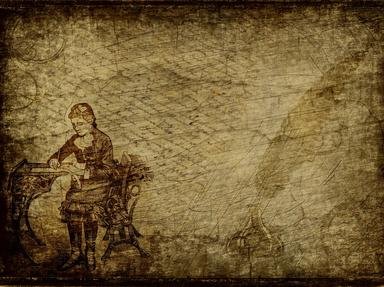Quiz Answer Key and Fun Facts
1. Across the rooftops of an Indian city a young street urchin (Kim) plays the innocent games of running secret errands for lovers and ends up getting involved in 'The Great Game' where his life is on the line. Through which city does Kim first learn his gift for espionage?
2. "The City of Dreadful Night" appears in the collection of stories from "From Sea to Sea Vol. II". It is a series of eight stories detailing Kipling's exploration of the city of Kolkata. But by what name did the city go by in 1888 when Kipling prowled the streets for stories?
3. In the northern Indian state of Uttar Pradesh Kipling wrote for a newspaper called "Pioneer". He lived in this city in a bungalow situated near the Motilal Nehru Road. In which city was this bungalow situated in 1888-89?
4. In "The Bride's Progress" Kipling describes a sight-seeing trip by a couple on their honeymoon to a city that is now known as Varanasi in the state of Uttar Pradesh. What was its name in the story?
5. In "Among the Railway Folk" Kipling visited the headquarters of the East India Railway (EIR) and was able to glean three stories from this place. In which city would you find the headquarters of the EIR?
6. "They marched jaw-bound against blowing sand, across the salt desert to ..., where Mahbub and his handsome nephew Habib Ullah did much trading;". Where was Kim and the Lama headed at the other side of the desert in Rajasthan?
7. One of my favourite films starring Sean Connery is "The Man who would be King". However the film is based on a short story of the same name by Rudyard Kipling. In the story the protagonist has to change trains at a particular train stop. Which train station is mentioned in "The Man who would be King"?
8. In "Kaa's Hunting" Mowgli is kidnapped by the Bandar-log and taken to an old ruined city called 'Cold Lair'. Which city, in the state of Rajasthan, are the ruins believed to be based on?
9. One of Kipling's many poems is based in the former capital city of a princely state during the Rajput era. Kipling wrote of the palace there as: "To give on paper any adequate idea of the Boondi-ki-Mahal is impossible.". The poem deals with a disturbing Indian custom. Which poem is it?
10. "Her Majesty's Servants" is set during the glory of the British Raj in India. The action takes place before the British army is reviewed by the Amir of Afghanistan and the Viceroy of India, Lord Dufferin. In which city, in the northwest of the Indian sub-continent, does the parade take place?
Source: Author
martinjudo
This quiz was reviewed by FunTrivia editor
trident before going online.
Any errors found in FunTrivia content are routinely corrected through our feedback system.
